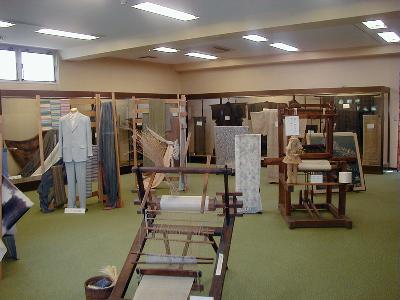|
Omi-jofu is a hemp fabric made in Echigawa, Echi, Shiga Prefecture. The clean waters of the Echigawa River, the high humidity and the success of the Omi merchants led to the development of fabric manufacturing here in the Kamakura period.
In the Edo period, the cloth market grew under the patronage of the Hikone clan. Since then, cloth-dyeing techniques have evolved greatly. Later, a unique and sophisticated designed 'Omi' cloth was woven. The name 'jofu' (direct translation = 'upper cloth') was used because, during the Edo period, the cloth crafted in this fashion was used by the nobility.
The characteristic feature of Omi-jofu is that, after the dyeing of threads, it uses a typical method called 'shibotsuke' to dwindle the threads. Another imporant feature of hemp-cloth is that it absorbs moisture easily and is cooling to the wearer.
To conclude, it could be said that Omi-jofu is a traditional fabric that has evolved over time along with the spirit of the craftsmen.
In the Edo period, the cloth market grew under the patronage of the Hikone clan. Since then, cloth-dyeing techniques have evolved greatly. Later, a unique and sophisticated designed 'Omi' cloth was woven. The name 'jofu' (direct translation = 'upper cloth') was used because, during the Edo period, the cloth crafted in this fashion was used by the nobility.
The characteristic feature of Omi-jofu is that, after the dyeing of threads, it uses a typical method called 'shibotsuke' to dwindle the threads. Another imporant feature of hemp-cloth is that it absorbs moisture easily and is cooling to the wearer.
To conclude, it could be said that Omi-jofu is a traditional fabric that has evolved over time along with the spirit of the craftsmen.
| [+ADDRESS] | 
|













